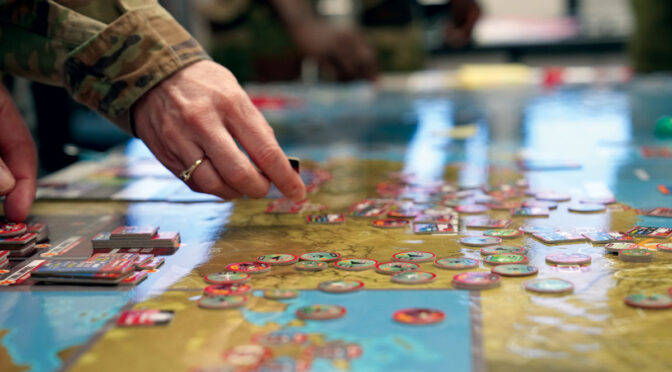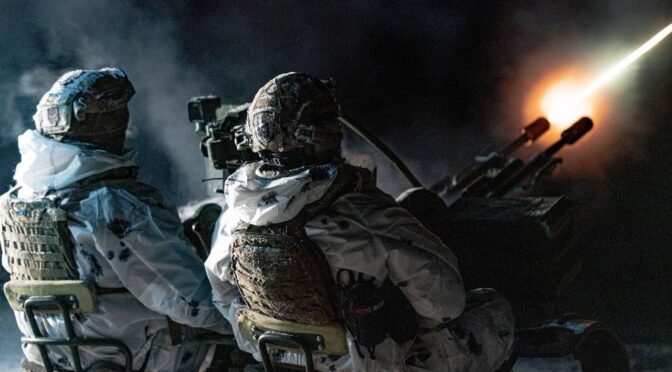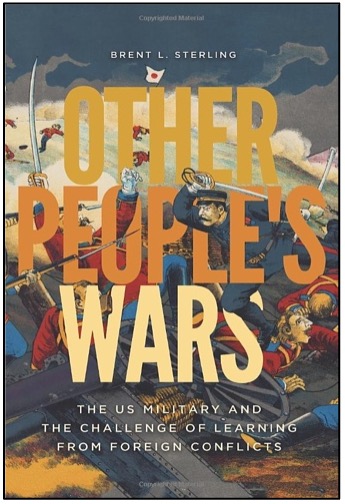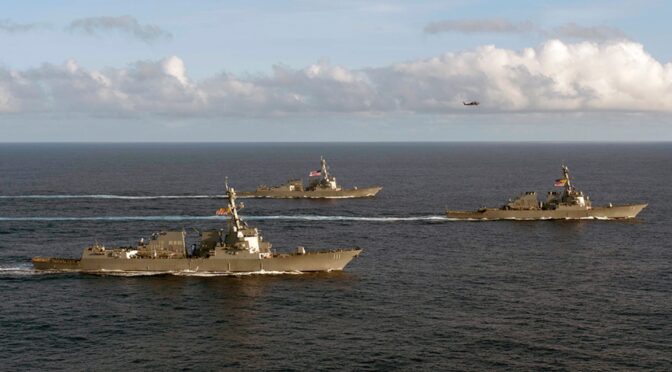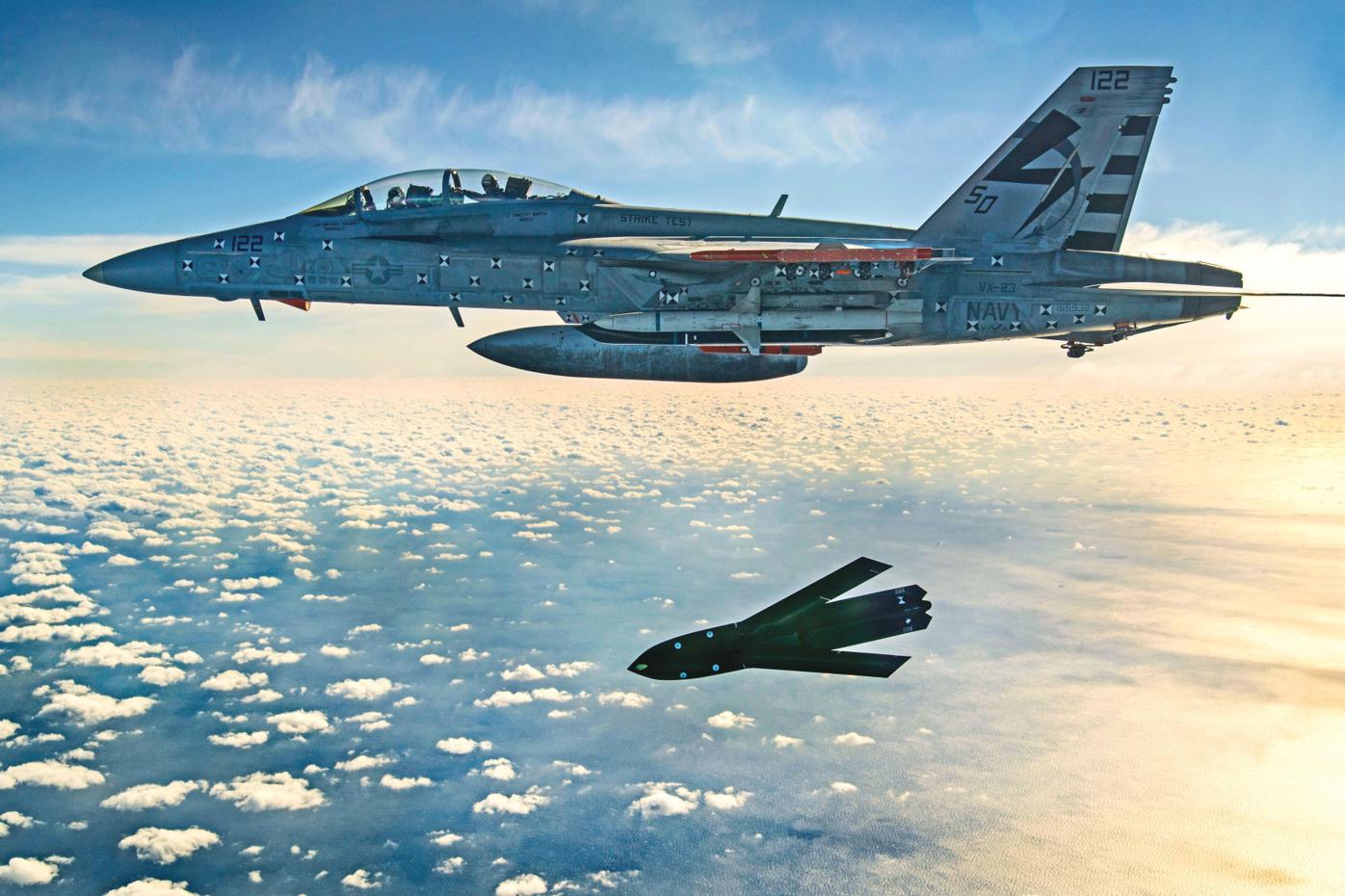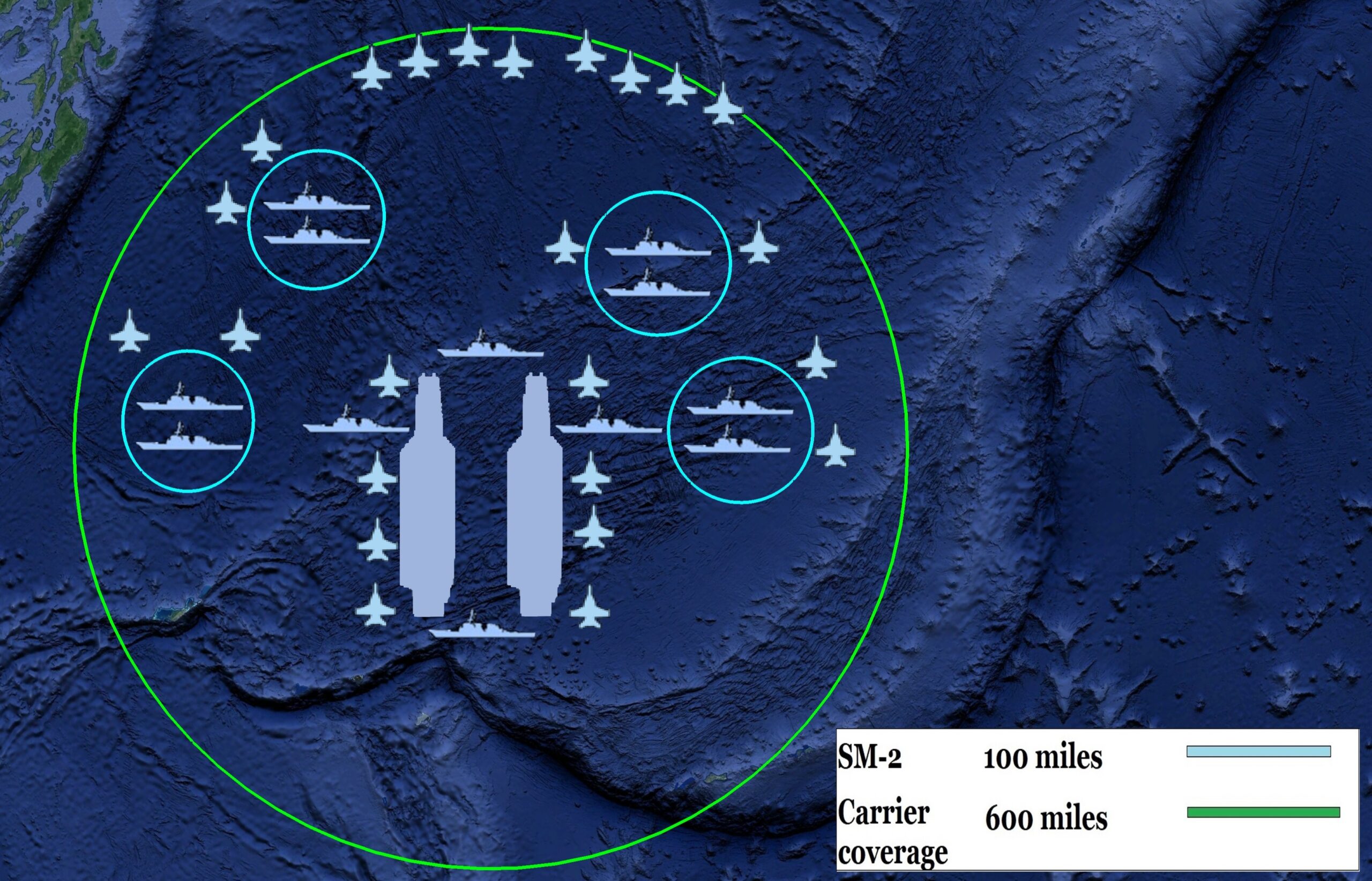The following article originally featured in the September 2024 edition of Military Review under the title, “Seven Reflections of a ‘Red Commander’ What I’ve Learned from Playing the Adversary in Department of Defense Wargames,” and is republished with permission. Read it in its original form here.
By Ian M. Sullivan
It is the spring of 20XX, and the U.S. joint force is engaged in a major war against a peer competitor. Earlier in the conflict, the enemy seized a critical piece of terrain, and the U.S. National Command Authority (NCA) ordered the joint force to take it back. This required a massive joint force entry operation (JFEO), arguably the most difficult of joint operations to complete. But the joint force was game. It assembled the largest maritime assault force—both amphibious assault ships loaded with Marines and transports carrying Army formations—since the U.S. invasion of Okinawa in April 1945. It required deft planning to organize, mass, and eventually converge the force over the great expanse of the ocean. Yet the joint force, or “Blue Force,” did so and was ready to strike.
As the Blue plan unfolded, all seemed on track. Forces were moving, and joint and combined combat power was ready to support the JFEO. But it was at this time that an old, often ignored military maxim came into play—the enemy gets a vote. And their vote mattered.
Taking advantage of their own sophisticated capabilities and an approach to war that was designed with Blue in mind, the enemy “Red” Force quickly engaged elements of the invasion force at range, well before the joint force could bring its full combat power to bear. Focusing largely on the amphibious assault ships, which have a critical “over the beach” capability, the Red antiaccess/area denial forces came into play. Shore-based ballistic and cruise missiles—some hypersonic—air-launched systems, and maritime strike assets converged in a massive, multidomain blow, which caused critical damage to the amphibious fleet. The amphibious ships never made it to the invasion beaches. This left the transport ships carrying the Army formations to carry on to the target; however, lacking the over-the-beach capabilities of the amphibious ships, they needed to land in a functioning port to unload the Army forces.

Thankfully, this whole story is notional, and it played out not on the frontlines of a faraway war zone but in a simulations center on an Army base. This world of wargaming is becoming an increasingly essential tool for the Army and joint force as they grapple with what it means to conduct large-scale combat operations against peer competitors in areas far removed from the continental United States. In the words of Ed McGrady, one of the Nation’s leading experts in the field, wargaming is the “one tool that enables defense professionals to break out of the stories we have locked ourselves into.”1 He notes that “wargames are about understanding, not knowledge,” and about the stories we tell ourselves. In this case, Blue was forced to contend with an uncomfortable story; namely, a peer competitor can prevail if it plays its cards right. Blue then had to contend with an understanding of the implications of what transpired.
Additionally, it is important to note that none of this understanding or learning can occur if Blue does not have an effective opponent. And that is the role that I often get asked to play, that of “Red commander.” Over the past five years, I have played in twelve separate wargames for the Army, the Navy, combatant commands, and the joint staff; in nine of them, I was the Red commander. This means I led the enemy effort, supported by teams of experts from both military and civilian intelligence agencies. The “Red Team” truly is where “understanding” comes home to roost, as Red players must not only understand the intelligence record, but we must also understand how to mesh what we know into an operationalized campaign that effectively challenges Blue.
Red also must understand Blue, sometimes as well as Blue understands itself. Red provides Blue with a thinking enemy who understands Red’s real-world capabilities, warfighting doctrine, and national security imperatives (what we know). Red then operationalizes this understanding, along with an understanding of contemporary and near-future warfare, into a fight in the style the adversary would undertake (applying what we know). Dale Rielage, a brilliant Red Team expert, argues that the “value of wargaming hinges in large part of the quality of the opposition force—the ‘Red.’”2 To further his point, Rielage cites Capt. William McCarty-Little, the officer who first introduced wargaming to the Naval War College in the 1880s, who noted that the key to a successful wargame was “a live, vigorous enemy in the next room waiting feverishly to take advantage of any of our mistakes, ever ready to puncture any visionary scheme, to haul us down to earth.”3
Playing Red is a difficult task, and the Red commander treads a narrow path. On the one hand, the Red commander must have an excellent working understanding of how potential adversaries fight. It is both art and science. It is not just a technical exercise in understanding Red orders of battle or the capabilities of their systems but really is about being able to apply that knowledge in what amounts to planning and then executing a campaign plan and leading the adversary’s war fight. This means the Red commander needs to understand a potential enemy’s approach to warfare, their doctrine, and how they have employed their forces in regional contingencies and in training.
But at the same time, the Red commander plays a key role for Blue by helping them understand what Red is thinking. A good Red commander finds a way to keep Blue on its toes, all the while helping them comprehend the events of the game as they unfold and then working to explain the reasons and logic that underpin Red actions. A Red commander who cannot do this professionally, tactfully, and with good humor can completely scuttle the game. To truly help this understanding stick, a Red commander needs to convince Blue that the Red Team is more than a mere sparring partner but a broader partner in learning and thinking about what could happen in a potential conflict.
Wargames should be about Blue’s learning, not Red’s. However, one of the main benefits for Red in these events is that we learn too. In fact, our learning may actually be more acute because we often get many more “reps and sets” playing through countless permutations of possible regional conflicts when compared to our Blue counterparts. Red players become very knowledgeable and thoughtful on a range of issues, many of which relate to Blue as much as they do Red. We end up thinking a great deal about what warfare between peer competitors would look like. I like to tell my Red Team players that we should be able to close our eyes and visualize the conflict unfolding over time and space, which allows us to understand what key events will need to occur over what key pieces of terrain and in what time frames. Because we fight these wars time and again, we develop a unique understanding of both Red and Blue, their strengths and weaknesses, the vulnerabilities they present, and the opportunities they may be able to exploit.
U.S. Air Force Gen. John Hyten, former vice chairman of the Joint Chiefs of Staff, in describing how new joint warfighting concepts performed in a different wargame, noted that “without overstating the issue, it [the concept] failed miserably. An aggressive red team that had been studying the United States for the last 20 years just ran rings around us. They knew exactly what we’re going to do before we did it.”4 This is an advantage that a good Red commander will always have, which makes these games such important learning opportunities. But it also shows what it means to be a good Red commander—we must always try to further our own understanding of Red, Blue, and “Green” partner forces; the operational environment; and contemporary warfare so that we can give Blue the fight it needs at these wargames to advance its own understanding.
So, what are the key things I have learned in playing the role of Red commander over the last few years? Well, there is a great deal more than I could possibly put into words here. But there are some important, big-picture ideas, thoughts, lessons, and observations that I have derived from my gameplay. Without further ado, these are my seven reflections of a Red commander.
Lesson 1: Everything Starts with Understanding the Enemy
Simple, right? But it’s not as simple as you would think. The Army and the joint force are massive machines, and sometimes the process of understanding the enemy becomes inexorable. This can mean that the mechanisms simply move without reflection or thought—never truly internalizing an understanding of the adversary, who, as noted in the starting vignette, always gets a vote. The threat must not be allowed to get lost in this machine. It must be front and center to everything the Army does. It must drive operations and the integration of doctrine, organization, training, materiel, leadership and education, personnel, facilities, and policy (DOTMLPF-P). Furthermore, the National Defense Strategy calls on the U.S. joint force to be “threat based,” and focuses on its pacing, acute, and persistent threats.5
If we do not base what we intend to do in a conflict against a peer competitor on an understanding of that peer competitor, then we will be at a massive disadvantage in a conflict. We need to avoid future “lobster traps,” and a working knowledge of the adversary is our best hedge against a failure of imagination. This notion is at the core of U.S. Army Training and Doctrine Command’s latest operational environment assessment, The Operational Environment 2024-2034: Large-Scale Combat Operations, which states plainly, “to achieve victory, the U.S. Army must know the enemy.”6 We need experts with a deep understanding of the adversary, but we also need those who will devise war plans and then execute them to maintain a strong working knowledge of Red. This was standard Army procedure during the Cold War, but it became a lost art in the years following. Wargaming can help restore that art. For example, in its after action report for the Unified Pacific 22 wargame, U.S. Army Pacific’s first highlighted insight was the requirement to address two key advantages held by the Chinese People’s Liberation Army (PLA)—mass and interior lines.7 This key conclusion from Unified Pacific 22 demonstrates how wargaming can specifically help war planners and operators learn about the adversary and then develop an understanding of the challenges it would need to overcome in an actual conflict.
Lesson 2: Warfare Remains a Human Endeavor
Wargames spend a great deal of time, effort, and focus on capabilities, both Red and Blue. Wargaming provides a unique laboratory to see how critical capabilities—such as hypersonic missiles; unmanned systems; counterspace weapons; new and visionary intelligence, surveillance, and reconnaissance capabilities; or counter-unmanned aircraft systems—fit into a conflict.
But it is not the performance of these systems that are central to these games. It is the human factor, namely how these pieces are put together and employed by people, the strategies they adopt, and how they react to the unexpected, that truly makes wargaming unique. The Center for Army Analysis, the Army’s leading provider of wargames, notes that wargaming highlights the “complex, subjective, and sometimes illogical and irrational decision of humans.”8 One of the most telling examples of this comes from the Cold War, Exercise Ivy League ’82. The game simulated a rapid Soviet nuclear attack on the United States and gave the U.S. NCA mere minutes to react. The game was played twice; once with a stand-in president, and once with President Ronald Reagan playing his role as commander in chief. The game essentially demonstrated the human nature of existential conflict. It demonstrated that panic or emotion could very well be real and palpable, and that the best-laid plans are hostage to human actions. One issue that came up in Ivy League ’82, for example, was that President Reagan refused to board the National Emergency Airborne Command Post when a notional Soviet nuclear strike was inbound. He wanted to manage the crisis from the White House and not in the skies aboard the “Kneecap,” thereby placing himself at grave risk and overturning the best-laid continuity of government plans.
It is becoming rapidly apparent that competition, crisis, and conflict between great powers and peer competitors will be joint, combined, interagency, and whole-of-nation. The Department of Defense (DOD) wargaming community has started to understand this and does everything it can to invite experts from outside their typical echo chamber to participate in a game. This is important, as it shows the DOD that it is but part of a broader nation that would be engaged in a conflict. It shows that other entities, whether an intelligence agency, an ally, or perhaps even a private industry entity, might have an ability to help solve a military problem.
It also means that even though the DOD leads most wargames, military leaders must understand that they will not make many of the critical strategic calls during the run-up to a crisis or conflict. I recently played in a game where a senior political appointee from within the DOD played the NCA for a game in which the United States was engaged in a conflict with a nuclear-armed, peer competitor. The Blue Team, in responding to Red aggression, wished to quickly target and destroy a number of Red assets and installations. They were nonplussed to learn that the authorities for their desired strike were withheld as the NCA thought through his decision. During the hotwash, when Blue planners brought the delay up, the individual playing the NCA told them that he was being asked to make the most consequential decision any U.S. president would ever have to make—to initiate combat operations against a nuclear-armed enemy who had the capability to cause critical damage to the United States. He then, tongue-in-cheek, asked them to forgive him for taking some extra time to contemplate such a momentous call.
This is an extreme example, but wargaming needs to incorporate not only the capabilities but also the decision-making processes of a range of actors, both across the U.S. government and among our allies and partners. Getting experts from across this spectrum to participate in wargames will become increasingly essential.

Lesson 4: Warfare Will Be Multidomain, and Wargames Allow Us to Master Multidomain Skillsets
What makes contemporary and near-future warfare so different when compared to what we have experienced since the end of the Cold War is that our key potential adversaries can match the U.S. joint force and its allies across all domains. They can converge capabilities, deny us the ability to operate in certain domains, and then achieve their campaign objectives if they play their cards right. In wargames, Red players generally have more experience and practice at employing multidomain capabilities than the typical Blue players, often providing a wake-up call to the Blue Team. Our pacing threat is designing a force capable of operating and converging across domains, with capabilities and an approach to war that denies Blue the ability to maneuver or operate jointly across warfare domains.10 If handled well in a wargame, Red can prevail. Conversely, Blue must use wargames as ability to test its own multidomain theories. Wargames offer a unique venue where the services can see how things come together in the joint fight. Italian airpower theorist Giulio Douhet noted, “There are experts of land, sea, and air warfare. Yet there are no experts of warfare. And warfare is a single entity, having a common purpose.”11 Wargaming can help develop those experts and particularly develop the multidomain skills, knowledge, and understanding that the joint force will require to take on an adversary who also can operate across domains.12
Lesson 5: The Army Likes to Live in the Tactical World; Great Power Warfare Is Won and Lost at the Operational Level
The era of counterinsurgency shifted the Army’s focus to the tactical level. After the initial invasion of Iraq in 2003, the Army changed its unit of action to the brigade level, and most of the fighting in Iraq and Afghanistan was done at the battalion and company levels. The whole Army structure of that era—how we trained, how we thought about warfare, and how we organized—focused on the tactical fight. Wargaming against peer competitors, however, demonstrates that such conflicts likely will be won or lost at the operational level, and that operational art is a skill set that must be understood throughout the joint force. If the tactical level focuses on battles, engagements, and small-unit actions, it is the operational level that will provide the critical linkages in terms of campaigns and major operations that ensure tactical success eventually translates to the strategic level, where theater strategy and national policy reside.13 It is the operational art that allows the commander to translate strategic-level goals into tasks that subordinates can accomplish.14
An example of this can be found in Unified Pacific 23, which focused on contested logistics. The game’s final report notes the criticality of improving joint combined command and control. For sustainment, the necessity to maximize operational-level, intratheater movement is then controlled by U.S. Indo-Pacific Command’s emerging Pacific Deployment and Distribution Operations Center, which takes in requirements from service components and then issues orders to subordinate commands to execute. The Army’s 8th Theater Sustainment Command then evaluated best practices and techniques to carry out sustainment down to the tactical formations in the fight.15 These types of issues routinely dominate wargaming and are clearly operational rather than tactical. This vignette demonstrates how practicing operational art is a crucial advantage of wargaming.
Lesson 6: Wargaming “Reps and Sets” Guard Against Strategic Surprise and Failure of Imagination
Red experts spend most of their time thinking about our adversaries and what conflict with them could entail, and most have played Red in many wargames. The next game is not summary learning for Red—it is just another permutation of a fight they’ve fought numerous other times. Blue generally does not get the luxury to do this in the daily press of normal operations, and when the Blue Team assembles for a wargame, it likely is the first time many of them have confronted the operationalizing of their war plans. Armies and soldiers often learn best through experience of battle, and wargaming is one of the best ways to at least approximate some of the challenges that could be faced when a conflict begins. In his excellent work on wargaming the unfought battles of the Cold War, Jim Storr notes, “Things that might be blindingly obvious to someone who gamed dozens of battles might well be nonsensical or, at best, counterintuitive to commanders who served for years but never fought [them].”16 Having the opportunity to fight the fights that could occur means that leaders will have the opportunity to confront the challenges they might encounter and not be faced with surprise or suffer a failure of imagination.
A pertinent historical example involves Gen. Douglas MacArthur during the Japanese invasion of the Philippines in 1941. Throughout the interwar years, U.S. defense planners struggled with the notion of how to defend the Philippines from a potential Japanese assault. The result was the well-known War Plan Orange (WPO), which understood, even before the attack on Pearl Harbor, the difficulties that the United States would have in reinforcing the Philippines across the expanse of the Pacific and in the face of Japanese air and maritime power. WPO-3, the variant in effect in 1941, called for the U.S. forces in the Philippines to withdraw to the defensible Bataan Peninsula on Luzon, where, with pre-positioned sustainment stocks in place, they would hold as long as possible to give forces marshaling on the U.S. West Coast and Hawaii time to defeat the Japanese Navy and relieve the defenders. Despite the years of work in devising WPO—and countless wargames supporting it—MacArthur completely revised the plan on the eve of the actual Japanese attack. Instead of consolidating on the defense on favorable terrain, he would attempt to defeat the Japanese on the beaches of Luzon, wherever they landed. When the Japanese landed, MacArthur’s forces were completely out of position and out of time.17 In this case, MacArthur disregarded the “reps and sets” that went into devising WPO-3 and suffered due to his overconfidence. However, when leaders get the chance to learn from their participation in wargames, the experiential learning process generally becomes visceral and unforgettable, and hopefully will prevent future cases like the Philippines in 1941.
Lesson 7: Blue Buy-In Is What Makes Wargaming Useful
Red’s job in wargaming is difficult, as it often must relay uncomfortable truths to Blue. For wargaming to have value, Blue must understand and accept the notion that the scenario Red is presenting is valid. Red teaming expert Micah Zenko writes that there are three elements of buy-in that Blue must adopt. First, Blue must accept that there is a potential vulnerability within its sphere of interest/action that Red can help uncover and address. In military terms, this represents capabilities, approaches to war, and plans that can potentially defeat Blue. Second, Blue must be willing to assemble the best Red players it can possibly find. And third, Blue must allow Red to be absolutely truthful about its findings.18 This is not always easy, and wargames are replete with stories about Blue discounting Red actions based on the cliché that a Red action “would never happen” or, even worse, that Red “cheated.”
The story of Millenium Challenge 2002, a concept development wargame that was designed to validate a whole new joint approach to war, still resonates as a warning of what can happen when this buy-in does not exist. A strong Red Team led by retired U.S. Marine Corps Lt. Gen. Paul Van Riper created controversy by demonstrating the flaws in Blue’s concept. Instead of accepting the flaws, joint forces command leadership instead fell line with the “this could never happen” school of thought and reset the game, adding massive constraints on Red. This led to a public relations disaster that remains a case study of how not to use wargaming.19
However, failing to get Blue buy-in to Zenko’s three elements have, in practice, had much more devastating effects than merely damaged reputations. On 27 August 1941, a group of graduate students from Japan’s Total War Research Institute, an institution that brought together the elite young leaders of the Japanese military and civilian government, presented a report to Japanese Prime Minister Konoe Fumimaro on Japan’s prospects for winning a war against the United States and its allies. The report, which was backed by extensive research and wargaming, asserted that Japan might prevail in a few initial battles but concluded that it would be drawn into a protracted conflict where its resources would dwindle and eventually expire, leading to inevitable defeat. As a result, the Japanese played another wargame designed to test their conclusion, and most of the ministers who participated came to the same conclusion regarding a war with the United States.20 Yet Japanese decision-makers—political and military—ignored the findings.
A healthier and more useful example of Blue buy-in can be found with Unified Pacific. The outcomes from Unified Pacific 23, for example, have been incorporated into U.S. Army Pacific’s operational campaign—Operation Pathways—and into real-world exercises, like the joint U.S.-Australian Talisman Sabre 23. Many of the outcomes also were included in the U.S. Navy’s Global game.21
Conclusion
There are many more things I have learned from playing Red in these wargames, and they range across a variety of issues. Simple things, like understanding the military implications of geography, to the very complex, such as what it means to engage in open conflict with a nuclear-armed peer adversary or understanding how we end wars. Playing in games certainly has made me a better intelligence analyst as the practical, experiential side of gaming has revealed implications and insights that intelligence reporting alone could never have given me. Most of all, it has driven home for me the necessity to develop a strong working relationship with Blue decision-makers, operators, and staff officers. These relationships are built on trust, which develops over time. When Red can demonstrate that it is indeed on the same team as Blue, a remarkable kind of learning occurs, and we are able to get to the type of competency required to prevail in global wars against peer competitors.
I have learned that we do not wargame enough, and that we should find ways to incorporate wargaming more deeply across all our various disciplines, and not just in large, command-sponsored, multiweek games. In addition to the time I have spent supporting these games, I am also an avid hobby wargamer, and I have learned a great deal from playing “for fun.” Namely, I sometimes get to play Blue, which is remarkably fun and interesting to me. When done right, a Red commander can provide a significant force multiplier to Blue. On his first day as the Pacific commander in chief, Adm. Chester Nimitz famously met with his staff intelligence chief, then Lt. Cmdr. Edwin Layton, and told him,
“I want you to be the Admiral Nagumo of my staff. I want your every thought, every instinct as you believe Admiral Nagumo might have them. You are to see the war, their operations, their aims, from the Japanese viewpoint and keep me advised what you are thinking about, what you are doing, and what purpose, what strategy motivates your operations. If you can do this, you will give me the kind of information needed to win the war.”22
If Red is played well in a wargame, the Red commander can do what Nimitz charged of Layton but hopefully prior to a disaster of strategic surprise and failure of imagination of the magnitude of Pearl Harbor.
Interestingly, our pacing threat has adopted this very approach. The PLA has enthusiastically adopted wargaming as a means of testing its own ideas about warfare and to help overcome its lack of real-world combat experience. The PLA Navy has led the way in this regard, and it recognizes the need to effectively replicate its adversary—the United States—in these games. To do so, the PLA Navy created the Blue Team Center (in PLA parlance, the Blue Team are the adversaries) at the Naval Command College at Nanjing. The college’s one-time commander, then Rear Adm. Shen Jinlong, who was later promoted and served as the PLA Navy commander, noted that the PLA Navy’s wargaming faced a major problem—namely, that “Red (China) and Blue (the United States) were like twins. Not only were Blue’s organization, equipment, and combat style the same as Red—they even had the same operational thinking.”23 The Blue Team is designed to rectify this mirror imaging so that PLA Navy wargames are more useful and effective. A profile of the Blue Team director, Gong Jia, indicates that his goal is to understand the minds of Blue at the campaign level (operational level in Chinese terminology) and above.24

In one game where I played Red commander, the Office of the Secretary of Defense sent an observer team to assess if Red was being played effectively. As I was Red commander, the observers pulled me aside to interview me and ask me questions about how the game was going and how I was playing Red. One of the questions they asked me was among the best questions I’d ever heard because it gets to the gist of what it means to be an effective Red commander. They asked me, “How much better are you than Red would be in a real fight?” After thinking about it for a minute, I said our team probably was better because we understand Blue as much as we do Red. I told them if they asked me to, I could immediately take over as Blue commander and essentially run their fight because I had seen it and experienced it so much in so many other games. The observer team seemed happy with this answer and moved on.
But the question has stuck with me ever since. If Red does its job well, it provides Blue with the chance to try new things, to fail, to learn, and to hopefully redefine the stories that we tell ourselves, and to devise new thoughts and ideas that will lead to victory in a future conflict. In referring to the work done by the joint board in the 1930s and early 1940s at developing the “Rainbow” war plans (such as the aforementioned WPO), which included a great deal of research and wargaming, Blaine Pardoe writes, “Without the skills earned working in the darkness … the United States would have struggled to attempt to develop this competency in its general staff.”25 This “work in the darkness” requires a capable, knowledgeable, flexible, and adaptive Red that will enable Blue learning.
A wargame will not predict the future for Blue, but if Red does its job correctly, it will allow Blue to experience what a potential fight could look like. It becomes the work in the darkness that allows Blue to learn, and hopefully leads to the light of victory in the next war. So perhaps the most important lesson of all gets back to the beginning—we have to get Red right so that Blue gets the opportunity to learn and to get it right on a future battlefield.
Ian M. Sullivan is the deputy chief of staff, G-2, for the U.S. Army Training and Doctrine Command (TRADOC). He holds a BA from Canisius University in Buffalo, New York, and an MA from Georgetown University’s BMW Center for German and European Studies in Washington, D.C., and he was a Fulbright Fellow at the Universität Potsdam in Potsdam, Germany. A career civilian intelligence officer, Sullivan has served with the Office of Naval Intelligence; Headquarters, U.S. Army Europe and Seventh Army; the Office of the Director of National Intelligence (ODNI) at the National Counterterrorism Center; the Central Intelligence Agency; and TRADOC. He is a member of the Defense Intelligence Senior Executive Service and was first promoted to the senior civilian ranks in 2013 as a member of the ODNI’s Senior National Intelligence Service.
The author would like to thank Maj. Gen. Jay Bartholomees, U.S. Army, and Charlie Raymond (TRADOC G-2) for their thoughtful reviews and edits of this article.
Notes
1. Ed McGrady, “Getting the Story Right About Wargaming,” War on the Rocks, 8 November 2019, https://warontherocks.com/2019/11/getting-the-story-right-about-wargaming/.
2. Dale C. Rielage, “War Gaming Must Get Red Right: An Expert In-House Adversary is a Powerful Tool for the Fleet,” Proceedings 143, no. 1 (January 2017), https://www.usni.org/magazines/proceedings/2017/january/war-gaming-must-get-red-right/.
3. Ibid.
4. Tara Copp, “‘It Failed Miserably’: After Wargaming Loss, Joint Chiefs Are Overhauling How the US Military Will Fight,” Defense One, 26 July 2021, https://www.defenseone.com/policy/2021/07/it-failed-miserably-after-wargaming-loss-joint-chiefs-are-overhauling-how-us-military-will-fight/184050/.
5. U.S. Department of Defense, 2022 National Defense Strategy (Washington, DC: U.S. Department of Defense, 2022). https://www.defense.gov/National-Defense-Strategy/.
6. U.S. Army Training and Doctrine Command (TRADOC), The Operational Environment 2024–2034: Large-Scale Combat Operations (Fort Eustis, VA: TRADOC, 1 August 2024), 31, https://oe.tradoc.army.mil/2024/07/31/the-operational-environment-2024-2034-large-scale-combat-operations/.
7. U.S. Army Pacific (USARPAC), Unified Pacific Wargame Series 2022: Unclassified Overview (Fort Shafter, HI: USARPAC, September 2022), 4, https://www.usarpac.army.mil/Portals/113/PDF%20Files/Unclassified%20UPWS%20Report%20Final.pdf.
8. Government Accounting Office (GAO), Defense Analysis: Additional Actions Could Enhance DOD’s Wargaming Efforts, GAO-23-105351 (Washington, DC: GAO, April 2023), https://www.gao.gov/assets/d23105351.pdf.
9. Marc Ambinder, The Brink: President Reagan and the Nuclear War Scare of 1982 (New York: Simon and Schuster, 2018), 82–89.
10. Ian M. Sullivan, “Three Dates, Three Windows, and All of DOTMLPF-P: How the People’s Liberation Army Poses an All-of-Army Challenge,” Military Review 104, no. 1 (January-February 2024): 14–25, https://www.armyupress.army.mil/Journals/Military-Review/English-Edition-Archives/January-February-2024/Sullivan/.
11. Giulio Douhet, The Command of the Air, trans. Sheila Fischer (1921; Rome: Rivista Aeronautica, 1958).
12. Robert P. Haffa Jr. and James H. Patton Jr., “Wargames, Winning and Losing,” Parameters 31, no. 1 (Spring 2001): Article 9, https://press.armywarcollege.edu/parameters/vol31/iss1/9/.
13. Chad Buckel, “A New Look at Operational Art: How We View War Dictates How We Fight It,” Joint Force Quarterly 100 (1st Quarter, January 2021): 94–100, https://ndupress.ndu.edu/Media/News/News-Article-View/Article/2498208/.
14. Wilson Blythe, “A History of Operational Art,” Military Review 98, no. 6 (November-December 2018): 37–49, https://www.armyupress.army.mil/Journals/Military-Review/English-Edition-Archives/November-December-2018/Blythe-Operational-Art/.
15. USARPAC, Unified Pacific Wargame Series 2023: Unclassified Overview (Fort Shafter, HI: USARPAC, September 2023), 8.
16. Jim Storr, Battlegroup! The Lessons of the Unfought Battles of the Cold War (Warwick, UK: Helion, 2021), 74–75.
17. John C. McManus, Fire and Fortitude: The U.S. Army in the Pacific War, 1941–1943 (New York: Caliber, 2019), 63–64.
18. Micah Zenko, Red Team: How to Succeed by Thinking Like the Enemy (New York: Basic Books, 2015), 2–5.
19. Ibid., 52–61; Micah Zenko, “Millenium Challenge: The Real Story of a Corrupted Military Exercise and Its Legacy,” War on the Rocks, 5 November 2015, https://warontherocks.com/2015/11/millenium-challenge-the-real-story-of-a-corrupted-military-exercise-and-its-legacy/.
20. Eri Hotta, Japan 1941: Countdown to Infamy (New York: Vintage Books, 2014), 164–65.
21. USARPAC, Unified Pacific Wargame Series 2023, 11.
22. Ian W. Toll, Pacific Crucible: War at Sea in the Pacific, 1941–1942 (New York: W. W. Norton, 2012), 307; Rielage, “War Gaming Must Get Red Right.”
23. Ryan D. Martinson, “The PLA Navy’s Blue Team Center Games for War,” Proceedings 150, no. 5 (May 2024), https://www.usni.org/magazines/proceedings/2024/may/pla-navys-blue-team-center-games-war.
24. Ibid.
25. Blaine L. Pardoe, Never Wars: The US War Plans to Invade the World (London: Fonthill, 2014), 28.
Featured Image: Students move pieces around the board on 21 December 2023 during a wargame based on Pacific conflict while attending the Air War College at Maxwell Air Force Base, Alabama. (Photo by Billy Blankenship, U.S. Air Force)

